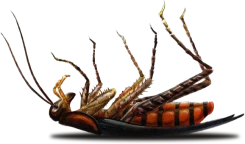Emerald Ash Borer
Emerald Ash Borers (EAB’s) are responsible for the destruction of over 100 million ash trees (and counting) nationwide. Emerald Ash Borers are wood-boring beetles native to Asia with a metallic green body which feed on the layer of the tree just under bark. That critical layer moves sugar, water and nutrients throughout the ash tree, keeping it alive and healthy.
EAB’s were first detected near Detroit in 2002 and spread quickly, some traveling on contaminated nursery stock. EAB’s don’t seem to be particular about their attacks, willing to feed on native and non-natives species. Black and green ash trees are the most vulnerable. It should come as no surprise that Asian species such as the Manchurian ash, exhibit the greatest resistance to this insect.
In a normal world, tree mortality would track at a pace of about 2% over an eight to ten year period. When EAB’s arrive, tree mortality rushes up to a breathtaking 100% without intervention. An early response was to remove all ash trees once EAB were detected. Now, experts suggest a hybrid approach in which more vulnerable trees are removed and healthier trees receive insecticidal treatment such as a stem injection or a root soak.
You may notice bark stripped from the ash trees – a sure sign of a tree in distress. This “blonding” process is actually the work of woodpeckers hunting for EAB larvae. The blonding doesn’t kill the tree – that’s due to the thousands of larvae feeding inside.
If you have ash trees in your landscape, pay close attention to them. Early intervention is crucial to prevent tree mortality. Once the beetles are well-established, and the tree has lost half of its crown, the best strategy is to remove and destroy it to prevent spreading EAB’s.


Why Choose Us?
Providing Reliable Pest & Wildlife Solutions Since 1939
At Home Paramount Pest Control, we have been dedicated to delivering reliable pest and wildlife management solutions for over 80 years. Our long-standing presence in the industry speaks volumes about our commitment to excellence and customer satisfaction. When you trust our team, you can always count on:
- Customized solutions to suit your specific needs
- Same-day service availability for pest infestation emergencies
- High-quality green products that are safe for the environment
- Complimentary pest inspections
- Affordable financing solutions tailored to your budget
Call us at 888-888-4663 to get started with a free pest inspection for your property today!
Learn More

